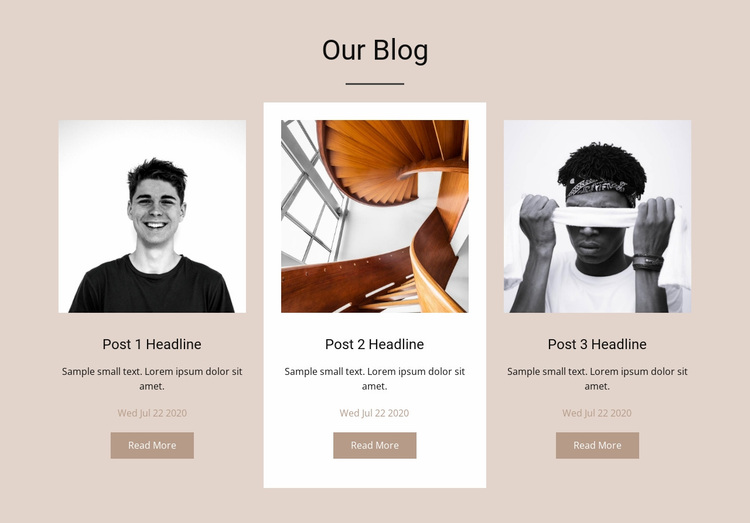Leading Tips for Developing an Impactful Internet Site Design That Converts
To achieve this, one must take into consideration a range of elements, including recognizing the target audience, prioritizing user experience, and maximizing for mobile systems. The tactical usage of compelling call-to-actions and a well-defined aesthetic hierarchy plays a critical duty in assisting individuals via their journey.

Understand Your Target Market
Understanding your target market is essential to effective internet site style, as it prepares for developing an appealing customer experience. Determining who your customers are, including their demographics, preferences, and actions, allows developers to tailor the internet site's material, layout, and performance to meet certain needs.
Carrying out comprehensive marketing research is important in this procedure. Surveys, meetings, and analytics can provide useful insights into customer expectations and discomfort factors. By compiling this information, developers can create individual personas that represent various segments of the audience, making certain that design decisions are educated and relevant.
Moreover, recognizing the target audience assists in picking appropriate design aspects such as color design, typography, and imagery that resonate with individuals. An internet site that speaks directly to its audience cultivates a feeling of link and trust, motivating longer sees and greater conversion rates.
Ultimately, a user-centered technique to web site layout not just enhances user fulfillment yet additionally sustains organization objectives by driving engagement and loyalty. By prioritizing the requirements and preferences of the target audience, a web site can successfully offer its objective and attain wanted end results.
Prioritize Customer Experience
To enhance the overall effectiveness of a site, prioritizing individual experience (UX) is necessary (Website Design). A properly designed UX ensures that visitors can browse the website easily, discover info swiftly, and involve with material meaningfully. This results in enhanced user complete satisfaction and higher conversion rates
Begin by implementing instinctive navigating. Menus must be rationally structured, enabling users to situate vital locations of the site with minimal initiative. Uniformity in style elements, such as color design and fonts, fosters knowledge, which is vital for preserving user involvement.
Furthermore, think about the filling rate of your site. A hold-up of simply a few secs can result in significant drop-offs, as individuals are less most likely to wait on a slow-loading web page. Enhancing images and maximizing code can enhance efficiency and keep site visitors.
By focusing on customer experience, you not just create a more pleasurable atmosphere for site visitors yet additionally strengthen your brand's trustworthiness. Eventually, an emphasis on UX is a financial investment in the lasting success of your internet site.
Maximize for Mobile Devices
Optimizing for smart phones is vital in today's electronic landscape, where a boosting variety of customers gain access to web sites via smart devices and tablet computers. A mobile-friendly style not only improves individual experience but also plays a significant role in improving search engine rankings. To attain this, it is important to take on a receptive style that immediately changes to various display dimensions and alignments.

Packing rate is one more vital factor; mobile customers are normally less patient and anticipate quick accessibility to info. Optimize photos and take advantage of browser caching to boost performance. Ultimately, test your website on numerous devices and display resolutions to identify and fix any type of possible functionality issues. By focusing on mobile optimization, you guarantee that your internet site remains competitive and properly engages a more comprehensive audience.
Usage Engaging Call-to-Actions
A site's efficiency typically rests on its ability to direct visitors towards wanted activities, making compelling call-to-actions (CTAs) important elements of layout. CTAs function as the pivotal points that direct individuals to engage with the website, this page whether that indicates buying, authorizing up for a newsletter, or downloading a resource.
To create efficient CTAs, clearness is vital. Usage succinct language that clearly interacts the activity you want the individual to take. Phrases such as "Start," "Join Free," or "Shop Now" not only convey urgency but also eliminate ambiguity. The placement of CTAs is equally important; they should be strategically placed throughout the page to guarantee they are conveniently noticeable, particularly in high-traffic areas.
Additionally, the style of CTAs ought to stick out without being noticeable. Employ contrasting shades and clear typefaces to ensure they capture focus. In addition, think about using directional cues, such as arrowheads or pictures, to direct users look these up towards these buttons. By concentrating on these aspects, companies can considerably enhance individual engagement, driving conversions and ultimately attaining their site's objectives.
Concentrate On Visual Pecking Order
Effective web site design depends greatly on a well-structured visual power structure that guides individuals through material seamlessly. By organizing components in a manner that prioritizes details, designers can improve customer experience and check here help with decision-making. This entails utilizing size, shade, comparison, and spacing strategically to attract interest to the most important components of a website.
Using bigger fonts for headings and subheadings establishes a clear difference in between different sections, enabling customers to scan content effortlessly. Furthermore, using different colors for buttons and calls-to-action can catch customer focus and encourage interaction. Whitespace is one more necessary part; it prevents clutter and allows individuals to concentrate on vital messages without distractions.
Images and graphics ought to match the text while likewise adhering to the well established power structure, enhancing the total message (Website Design). Uniformity in layout components, such as shade systems and typography, more reinforces the aesthetic power structure, making navigating instinctive

Final Thought
In verdict, efficient website style necessitates a thorough understanding of the target audience, prioritization of individual experience, and mobile optimization. Inevitably, a well-executed web site design serves as a critical element in driving user activities and achieving service objectives.